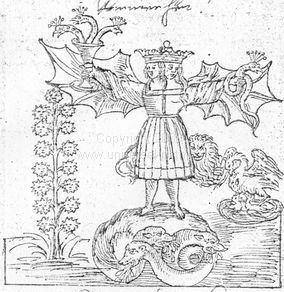Ramayana Epos
The Ramayana ( Sanskrit:Rāmāyaṇam) is an ancient Indian epic poem. The author of the oldest and best known version is Valmiki. The problem with the oral tradition is, that more than 300 variants of the Ramayana are known. The best known is the Valmiki-version. It was written between 7th to 4th centuries BCE, with later stages extending up to the 3rd century CE. The story has similarities with the greece Trojan war, where Helena is saved from Troja.
The Epos narrates the struggle of the divine prince Rama to rescue his wife Sita from the demon king Ravana, and afterwards Rama's return to Ayodhya to be a crowned king.
The text consists of seven books :
1. Bala-Kanda, book of childhood
2. Ayodhya-Kanda (steps 7 and 8 of the universal path)
3. Aranya-Kanda
4. Kishkindha-Kanda
5. Sundara-Kanda
6. Yuddha-Kanda
7. Uttara-Kanda (later appended)
Books 1-6 are an allegory of step 1 - 15 of the universal path.
== Allegoric meaning ==
Bala-Kanda : Rama is the only one who can break Shiva's bow (universal path 6) and wins Sita so as wife.
Sita symbolizes the transformed and awakened Kundalini, and therefore she is the most beautiful woman of her time - just like Draupadi of the Pandavas in the Mahabharata.
Rama stands here for the spiritual self.
Hanuman represents the developed human soul (tarotcard 10) - not the spiritual Jivatma.
Ravana is the astral wish- and desires - nature that dies at step 15.2 of the path.
The mountain Mahendra, from which Hanuman jumps across the sea, (which is equivalent the red sea of the isrealites), represents the final or solar-phase of step 12.
Rama examines Sita in the Yuddha-Kanda for purity (the result of the lunar phase - at the end of the lunar phase of step 15.4 of the universal path).
He marries her at 15.5 (Venusphase). Together they are equivalent to the Rebis.
* In the appended Uttara-Kanda Rama reaches enlightenment, and Sita returns to Bhudevi.
== Literature ==
- Archive.org : Search Ramyana
- Ebook of the ramayana
- Ramayan of Valmiki
- Sacred texts : Ramayana - online
- Valmikiramayana - online
== Weblinks ==
- Wiki about the Ramayana
- Maya in Ramayana
- Esoteric meanings in Ramayana and Mahabharata
of Spirituality
universal-path.org